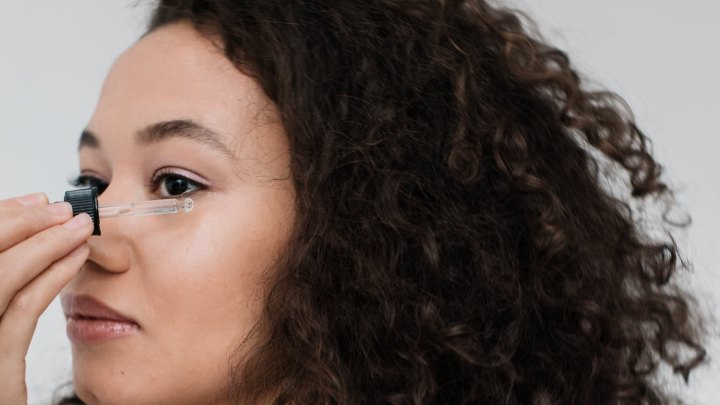Skincare acids are highly beneficial ingredients to oily and acne-prone skin and aging skin. Using one at a time can be simple and comforting. But when a friend recommends that you pair two acids for even better results, you may have so many thoughts at a time.
A common beta hydroxy acid like salicylic acid is a potent ingredient for addressing acne and its related problems.
However, the common drying effect is a major downside of using salicylic acid. And this is where it becomes necessary that you pair it with a calming ingredient like hyaluronic acid.
Therefore, it is safe to pair hyaluronic acid with salicylic acid to address skin conditions like acne and aging.
What does hyaluronic acid do for your skin?
Age, lifestyle, and weather conditions can cause hyaluronic acid and hydration levels to deplete. The topical application of hyaluronic acid-based products can help replenish hydration and boost moisture levels.
Hyaluronic acid is a natural acid that is present in different body parts and helps to keep your skin moisturized and supple. It is a mild acid that is also a humectant, pulling and retaining moisture in your skin.
This acid is a boon for different skin concerns, from acne to dehydrated skin. It complements other skin ingredients and your skin’s natural moisture level to improve the appearance and texture of your skin.
Hyaluronic acid helps to fill in the layers of your skin and smoothen out fine lines and facial wrinkles.
Moreover, the moisture boost helps to regulate oil production; a key step in managing oily and acne-prone skin. as it keeps acne-affected areas of your skin moist, it prevents scarring.
Additionally, the moisture boost improves the appearance of dry, cracked skin with is commonly associated with dehydration. This way it keeps your skin soft and glowing with an even complexion.
Hyaluronic acid is a common ingredient in products like serums, toners, creams, cleansers, and moisturizers.
What does salicylic acid do for your skin?
Salicylic acid is a keratolytic skincare acid. It helps to break bonds between dead skin cells that clog your pores and makes your skin scaly, dry, with thickened skin.
This makes this acid an effective exfoliator that helps to treat acne and dull complexion.
Salicylic acid is oil-soluble; this makes it very efficient in unclogging your pores. Also, it penetrates deep into your skin to carry out its many functions.
While exfoliating your skin, this acid softens the outer layer of your skin, making it easy to lift off dead cells and oil plugs.
Furthermore, this acid has great anti-inflammatory properties with which it soothes inflamed skin and reduces the swelling that characterizes acne and other skin blemishes.
Facial cleansers that contain salicylic acid help to deep cleanse your skin and get rid of clogs that can cause comedonal acne like blackheads and whiteheads. As salicylic acid unclogs your pores, it minimizes the appearance of pores and tightens your skin.
The topical application of this acid reveals a better and brighter complexion. Other products that may contain salicylic acid include serums, pads, creams, lotions, wipes, and cotton pads.
Can you use hyaluronic acid and salicylic acid together?
Yes, you can.
Dermatologists recommend that you pair salicylic acid with products that contain mild, hydrating ingredients like hyaluronic acid.
This is because salicylic acid is not all so wonderful. While it exfoliates your skin and helps to treat acne, it makes your skin dry out.
When your skin dries excessively, a vicious cycle sets in. However, having an ingredient like hyaluronic acid in your acne skin care routine will help you bypass this cycle.
Unlike some acid pairing, using hyaluronic acid with salicylic acid will not over-exfoliate your skin. More so, both acids are optimally active at pH ranges (salicylic acid at a range of 3.0-5.0 and hyaluronic acid at about 5.0), which are pretty convenient for each other’s activities.
Some face scrubs incorporate both acids in their formula to improve your complexion and prevent your skin from drying out and getting irritated by salicylic acid.
Can you use hyaluronic acid with salicylic acid for acne?
Both acids make magic for acne skin.
While salicylic acid penetrates your skin and unclogs your skin of oil and dead cell debris, hyaluronic acid simultaneously protects your natural barrier to prevent moisture loss.
In addition, the acne-causing bacteria cannot thrive with oxygen, and this is why it is active in clogged pores (where there is no oxygen). Salicylic acid exposes the acne-causing bacteria to oxygen and hinders its activity, preventing future acne breakouts.
As salicylic acid sloughs off dead skin cells, it helps to fade acne scars and even your skin tone.
Working together, they help to combat dull complexion, hydrate your skin and strengthen your natural barrier to resist the penetration of irritants that can cause acne.
Moreover, salicylic acid uses its anti-inflammatory property to calm skin redness and sensitivities that can lead to acne breakout. Hyaluronic acid also soothes your skin with a moisture boost and promotes wound healing.
Can you use hyaluronic acid with salicylic acid for aging skin?
Yes, you can.
Salicylic acid does more for your skin than help with acne. Being an exfoliator, it sloughs off dead, thickened skin cells that make your skin too dry, scaly, and aged. Therefore, it reveals a brighter, better-looking complexion.
Salicylic acid helps to communicate cell turnover by stimulating your skin to produce collagen and increase skin elasticity. And hyaluronic acid is widely known as a natural anti-aging routine component that will not purge your skin.
Hyaluronic acid replenishes moisture levels, alleviating skin dryness that can make your skin age faster. In tandem with salicylic acid, it conditions your skin to replace worn-out cells, hydrate your skin and keep it plump.
Also, it fills in fine lines and facial wrinkles, improving their appearance. Consequently, both skincare powerhouses plump your skin, firm the sagging areas and enhance a brighter, glowing complexion.
Can you layer hyaluronic acid with salicylic acid?
If you’re not using both ingredients in a combined product, the best way to use hyaluronic acid with salicylic acid is to layer them.
This way, you give salicylic acid almost no room to strip your skin of moisture and push it to dryness.
More so, it enhances the activity of salicylic acid. Hyaluronic acid creates an extra protective layer over your skin, helps salicylic acid to penetrate deeper into your skin, and carries out its acne-combating functions.
Since they do not over-exfoliate your skin, it is a good combination to drive your skin to a place of healthy cell replacement and a radiant complexion.
Also, they simultaneously carry out their specific functions which are tailored to target skin conditions like acne and aging.
Unlike some mix-and-match combinations, salicylic acid and hyaluronic acid are compatible with each other in terms of pH values. They work well in the acidic environment of the skin and do not denature or reduce the effectiveness of each other.
How to use hyaluronic acid with salicylic acid
Both ingredients are found in varying strengths. Hyaluronic acid may be found in cleansers, toners, serums, and moisturizers while salicylic acid is found in cleansers, toners, exfoliators, and serums.
- Begin with cleansing your skin with a mild cleanser which should not contain any AHA/BHA
- Then, dry your skin with a clean towel
- Afterward, dampen a cotton pad with a salicylic acid exfoliator and apply it to your face with gentle sweeps
- If it’s a leave-on product, you should not rinse it off. Otherwise, you may rinse it off
- Thereafter, while your skin is still damp, apply hyaluronic acid serum all over your face with gentle pats
- Follow up with a moisturizer (it is okay if it contains hyaluronic acid) to replenish moisture
- Apply other necessary creams and/or oils to your routine
- Finish it off with sunscreen lotion to protect your skin from UV rays’ sensitivities
Can you use other ingredients with hyaluronic acid and salicylic acid?
Yes, you can.
Some ingredients like niacinamide pair safely with salicylic acid and hyaluronic acid combination. You can layer all three at a time without fear of any skin irritations or one rendering the other unstable and inactive.
Niacinamide also helps to moisturize your skin, minimize pores and regulate sebum production, and improve your skin barrier preventing moisture loss.
Pairing it with salicylic acid and hyaluronic acid will enhance the activity of all ingredients and yield results.
When using more than one ingredient at a time, you need to be sure they work together and will not harm your skin. Active ingredients like retinol, benzoyl peroxide, AHAs, and any other BHAs will not make a good trio with hyaluronic acid and salicylic acid.
This is because these ingredients have a common drying effect as salicylic acid. Using them together can excessively dry out your skin, seeing that they are very potent.
However, you may use them in your routine at alternate times of the day or week, following up with a moisturizer.
Is using hyaluronic acid with salicylic acid bad for you?
On its own, salicylic acid has its downsides, and hyaluronic acid (an almost blameless acid) helps to counter it.
However, if you apply salicylic acid over damp skin, it’ll penetrate deep into your skin and cause irritation.
Conversely, applying it the right way, over clean, dry skin will make it more effective and yield better results.
FAQs

Should you use salicylic acid before or after hyaluronic acid?
Use salicylic acid before hyaluronic acid in your skincare routine.
Salicylic acid is commonly found in cleaning products like cleansers or toners.
Using it first will help debride your pores of debris and create a better penetrating surface for any other product like a hyaluronic acid serum.
Can you use a salicylic acid serum with hyaluronic acid serum?
Yes, you can make a custom-made skincare routine to target specific concerns by layering two or more serums.
You can layer salicylic acid serum with a hyaluronic acid serum to treat acne and aging skin.
When you want to do so, start with the thinner serum (salicylic acid) and layer the thicker serum (hyaluronic acid) over it. Layering them this way helps to prevent any side effects and seal in moisture.
Is it okay to use salicylic acid every day?
Yes, you can use salicylic acid every day to treat acne and its concerns.
However, if you have sensitive skin, you should introduce it in small amounts or use it two to three times a week until your skin can tolerate the acid.
What should you not mix with salicylic acid?
You should not mix retinol, glycolic acid, lactic acid, benzoyl peroxide, vitamin C, and any other AHA/BHA with salicylic acid.
Combining these ingredients may cause your skin to dry out excessively or one ingredient to make the other unstable and denature it.
Conclusion
Mix-and-match pairs are lovely for your skin, but they aren’t something to rush into. Before you pair two skincare powerhouses like acids, you should understand their lines of action and potential side effects.
Salicylic acid, for instance, is not all-friendly. Therefore, you should use it with ingredients that will soothe your skin and eliminate the chances of your skin drying out. And no ingredient does it like hyaluronic acid, the skin hydrator.
Above all, you should pair them the right way and use moderate concentrations of salicylic acid to treat acne and signs of aging.
Thanks for reading.
You can get more helpful beauty tips here on MBGON.
